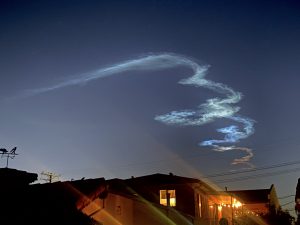SpaceX is best known for launching Starlink internet satellites, but the company is now going to launch satellites for SiriusXM satellite radio. SpaceX created its Starlink program in hopes of providing high-speed internet access to users sound the globe, and as a means to help its deep space ambitions.
On Sunday, June 7, the Elon Musk-helmed company will attempt to launch the SXM-8 satellite from the Cape Canaveral Air Force Station Space Launch Complex 40. This will be SpaceX’s second launch of a SiriusXM satellite. In December 2020, SpaceX used the Falcon 9 rocket to carry the SXM-7 radio satellite into orbit but the satellite later failed while in the orbit.
The satellite for Sirius XM was built by Maxar Technologies, a space technology company headquartered in Westminster, Colorado for $225 million. The size of SXM-7 is massive and weighs about 7,000 kilograms, which is about the same weight as 5 compact cars.
Also Read | SpaceX to accept Dogecoin as payment for ‘DOGE-1 Mission to the Moon’
On December 13, 2020, the SXM-7 was launched and it successfully reached geostationary orbit. However, after weeks of testing it failed, the satellite was declared a total loss in February 2021.
The technicians at Maxar Technologies may never know what exactly happened to SXM-7. The satellite was working perfectly, yet failed a few weeks later on January 16th, Advanced-television.com said.
In early March this year, Maxar Technologies delivered the new SXM-8 satellite to the launch facility in Cape Canaveral. The satellite is another giant weighing 7,000 kilograms. It is expected to provide service for 15 years or longer. Once it reaches orbit, it will unfurl a large antenna reflector which will allow SiriusXM programming to reach mobile radios, such as those in moving vehicles.
Also Read | ‘Breathe. Inhale’: Astronauts on SpaceX capsule describe Earth landing
According to Maxar, they have a decades-long relationship with SiriusXM and it is the ninth satellite they have built for them since 2000. The SXM -8 is twice as big and powerful as the first-generation SiriusXM constellation built by Maxar more than two decades ago.
SXM-8’s launch is scheduled for Sunday, June 6 with a launch window between 12:25 a.m and 2:26 a.m. ET. After launch, the reusable Falcon 9 rocket will return to Earth on the drone ship called “Just Read the Instructions”.
The night launches are often visible with the bright, fiery exhaust easily visible from Tampa Bay, but the cloud cover may cause visibility issues. Conditions need to be monitored as the weather may also cause a launch scrub. The live stream of the launch can be seen on social media by following 10 Tampa Bay or SpaceX to get updated information.






